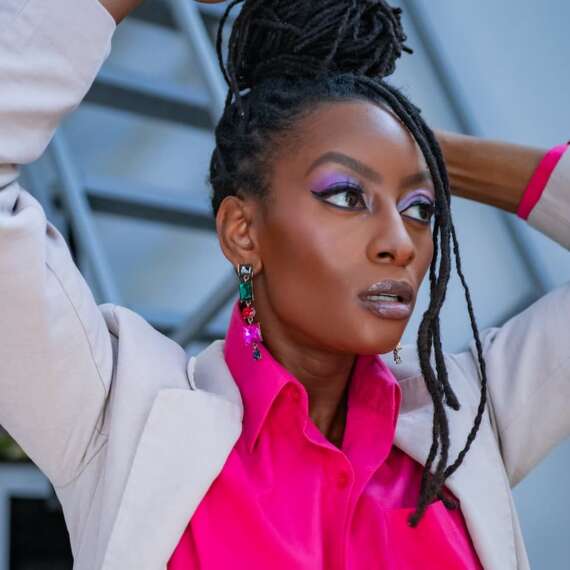Fashion is no longer just about what you make; it’s about how fast you adapt. The digital economy has turned style into a living system—constantly updating, endlessly measurable, and deeply personal. What once took seasons to shift can now change overnight. In this new landscape, survival isn’t reserved for the biggest brands, but for the most agile. If your label can learn, pivot, and communicate faster than the market changes, you’re not just keeping up—you’re leading.
Technology has flattened the playing field, but it’s also raised the stakes. E-commerce and social media gave every brand a voice, yet algorithms now decide who gets heard. Artificial intelligence can design, analyze, and recommend faster than any human team, but without clear strategy, automation becomes noise. The future doesn’t belong to brands that digitize everything; it belongs to those that digitize with purpose. Technology should amplify your distinct identity, not erase it.

The first principle of resilience in a digital economy is agility. Agility isn’t speed—it’s adaptability with structure. Think of it like good tailoring: flexible enough to move, but disciplined enough to hold shape. When consumer behavior shifts—as it did during the pandemic, or again during the AI boom—the strongest brands aren’t the ones that predict perfectly. They’re the ones that respond intelligently. Nike’s pivot to direct-to-consumer sales during lockdowns wasn’t luck; it was the result of years investing in digital forecasting tools and cross-platform consistency. You can’t future-proof what you don’t measure.
But data alone won’t save you. The next stage of digital maturity is emotional intelligence—the ability to turn analytics into empathy. Every click, search, and abandoned cart holds a story about how someone feels when they meet your brand. Instead of chasing metrics, study sentiment. When Gucci shifted its digital storytelling to emphasize heritage and sustainability over hype, engagement dipped briefly—but brand loyalty surged. Consumers are fluent in authenticity now. They can tell when you’re tracking them versus listening to them.
Artificial intelligence will define the next decade of fashion, but only if used with discernment. AI can generate trend predictions, optimize pricing, and personalize experiences at scale. Yet what makes it valuable isn’t automation—it’s augmentation. Brands that use AI as a creative partner rather than a replacement will win. Levi’s recently used AI to test hundreds of fabric simulations before committing to production, cutting waste by 30%. That’s the kind of efficiency that builds both profit and principle. The future isn’t about replacing the designer’s intuition; it’s about sharpening it.

To stay competitive, invest in three things: infrastructure, interoperability, and intention. Infrastructure means reliable technology—the systems that connect your e-commerce, CRM, and logistics in real time. Interoperability means making sure those systems talk to each other so data flows naturally instead of fragmenting across departments. And intention means defining the “why” before the “what.” A digital tool without purpose is just another subscription fee. Every innovation should reinforce your brand’s core story.
Speaking of story, the strongest digital brands tell theirs like it’s alive. Storytelling in this economy isn’t a campaign—it’s a continuum. Each post, email, and product release adds to a single conversation. The fashion house Bottega Veneta famously deleted its social media accounts in 2021, betting on mystery and craftsmanship. Yet its private digital communities thrived because fans wanted to belong to something meaningful, not noisy. The takeaway: your story doesn’t need to be everywhere; it needs to be consistent wherever it lives.
Ethics have also become part of digital resilience. Consumers now weigh values as heavily as design. According to a 2025 Deloitte report, 72% of Gen Z shoppers prefer to buy from brands that demonstrate transparency in sourcing and data privacy. The same generation that lives online also expects integrity there. If you collect consumer data, make sure you also collect consent and communicate why it matters. Ethical technology builds long-term trust—the one resource even AI can’t automate.

For smaller labels, the digital transformation might feel overwhelming, but scale isn’t the deciding factor anymore—clarity is. A small, digitally fluent brand can outperform a legacy house if it understands its audience and leverages tools wisely. Start with what you can control: streamline your e-commerce experience, test AI-driven analytics for trend forecasting, and train your team to adapt faster than your competitors. The more you experiment, the less you’ll fear disruption.
The future of fashion won’t belong to those who resist change or chase every new tool blindly. It will belong to the brands that can combine intuition with innovation. Those who treat digital transformation not as a project but as a mindset. Because in this new economy, your ability to evolve is your brand identity. And the most future-proof fashion label won’t just predict what comes next—it will help design it.











